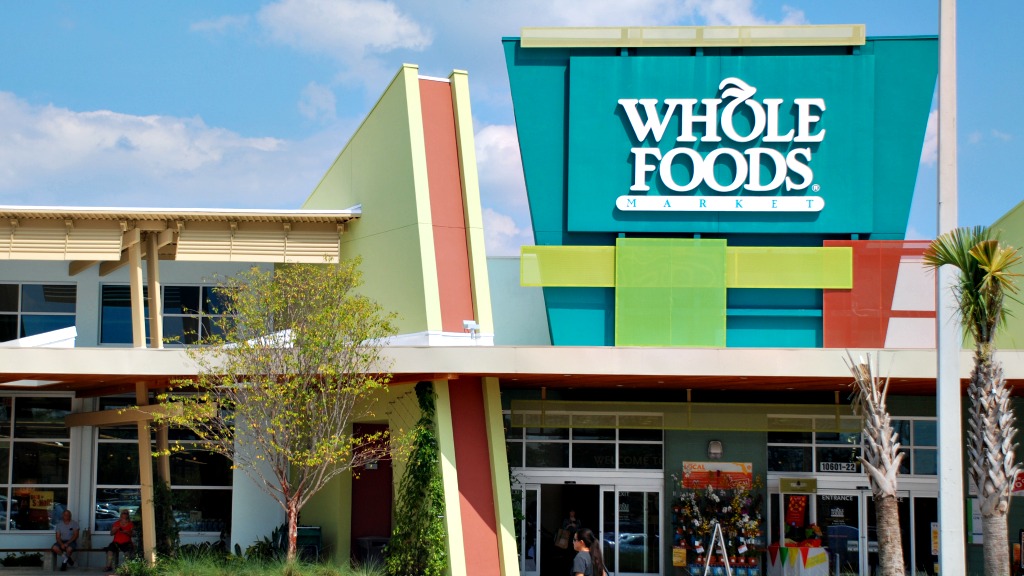In September of 2013, executives of the nationwide organic grocery chain Whole Foods made an unexpected announcement: They were opening a store in Englewood, a predominantly African-American neighborhood that’s centrally located in Chicago’s South Side. Anticipating some head-scratching about this decision, Walter Robb, Whole Foods’ Co-CEO, promised that he would consider the community’s vision and offer competitive prices. He could not avoid the side-eye, though.
A few Tweets (gathered by Marketplace.org) sent shortly after the announcement provide a sampling of the cynicism and the racism felt around this decision:
https://twitter.com/JetDrury/status/375350991664988160
@WholeFoods is making plans to open a store in Englewood. Chicago will have the healthiest gangbangers in the nation.
— Schatze (@GutterxFlower) September 4, 2013
https://twitter.com/illernois/status/375281104061603840
The upmarket organic chain that people have nicknamed “Whole Paycheck” is setting up shop in a neighborhood where roughly 40 percent are unemployed. The average household income here is $11,993 and almost a third of its residents lack a high school diploma. One Englewood local told The Economist that it is easier to buy guns and drugs there than food. So the obvious question here is: Who can afford to shop there?
And then there are the very real fears around gentrification: Is Whole Foods’ cashing in on Englewood a signal that some will be priced out?
“From our perspective, the choice is not between stores selling Flamin’ Hots and those selling fruit,” wrote Naomi Davis in BlacksinGreen.org. “It’s not about whether Whole Foods will give a neighborhood discount. It’s bigger than that. It’s about systemic, persistent, genocidal practices in the African-American community which we must rise up and reverse now.”
“We realize the first step is to listen to what people in Englewood actually want,” said Robb during the announcement last year. “We know that we can do certain things, but we know without partnering with the community, it doesn’t really amount to anything. This is not a helicopter-in drop, build a store. This is a situation where we start to meet people and learn and listen to what’s needed here.”
But that didn’t sway all skeptics. As one blogger wrote: “The store is expected in 2016. That gives the city more than enough time to get the undesirables out of the community and clean up the riff raff just like they did with the public housing units.”
The Austin-based grocery chain has lately been broadening its market strategy by opening stores in urban and low-income black neighborhoods in cities such as Detroit, Newark, and New Orleans — places that aren’t the company’s usual yuppie foodie sweet-spots. Read: upper-income white enclaves. Whole Foods claims that it merely wants to provide healthy food for underserved neighborhoods that lack quality grocery stores — what food justice advocates call “food deserts,” or lately “food apartheid.” It could probably be a retail game changer for areas where economic activity is scarce. Yet the race factor is undeniable.
Whole Foods broke ground here in July for the planned 18,000-sq. ft. store, which is much smaller than the footprint for other grocers in the city. Two months later, Robb was in Chicago again with a city councilwoman and Mayor Rahm Emanuel.
“There are skeptics, naysayers, those who said we would never get to this stage,” Robb said at the groundbreaking. “But we’re here and we’re staying and we intend to see this through and build this store together with you.”
They all gathered in the garden at Miles Davis Academy, a public elementary school in Englewood where students harvest lemon sorrel and oregano. The company’s Whole Kids Foundation pledged $20,000 to support schools in the neighborhood, which has an unfortunate reputation for violence. Whole Foods also announced a series of workshops aimed at providing business training for approximately 150 to 200 entrepreneurs in Englewood to help potential suppliers who want to stock Whole Foods shelves with their products.
To get a sense of how this might play out, I visited the grocery store Whole Foods opened in Detroit last year — the first national grocery chain to open in the financially devastated city in years. It’s located in Midtown, near the city’s medical center. Manager Larry Austin told me: “If you come to Whole Foods Market and you buy artisan cheeses and artisan olive oil, then yeah, your grocery bill is going go climb. But if you come in and shop staples, you shop our groceries, you shop produce … you’ll see we got bagged apples right now for $2.99 a bag.” (You can read more about the neighborhood’s response to Whole Foods in this article from Detroit’s Adrienne Maree Brown.)
As in Detroit, and many black, inner-city neighborhoods around the country, Englewood residents have been subjected to the burden of shopping at shoddy and overpriced corner stores where Flamin’ Hots are prominently displayed. The neighborhood has some of the highest rates of preventable diseases in the city, underscoring the food and health disparities.
Discount chains such as Aldi and Food 4 Less have opened as alternatives, but residents have been galvanizing around better quality food access for their neighbors. The city’s urban agriculture movement is grounded in Englewood, where groups like Eat to Live Englewood are addressing unhealthy food options and the Inner-City Muslim Action Network is confronting the existing grocery store models. [Editor’s note: Last month, we interviewed Rev. Otis Moss, whose Trinity United Church of Christ has also been addressing food issues in Englewood.]
Englewood is more than just the impoverished, crime-ridden neighborhood people often paint it as, though. Too often, segregated black neighborhoods are viewed merely through the lens of their deficits. Meanwhile, Englewood has a number of bona fide community assets, including many working- and middle-class families living there. Several community and cultural groups exhibit neighborhood efficacy through jazz festivals, town halls, and farmers markets.
The location for the new Whole Foods, at 63rd and Halsted, was known as a “second downtown,” back in the day. The neighborhood remains close to transportation and the once bustling Halsted location is across the street from Kennedy-King, a city college that has the well-regarded Washburne Culinary Institute. But when white flight happened, a lot of businesses and social capital fled, too.
Whole Foods alone won’t be able to fill that void, nor will it be a panacea for Englewood residents. But it can be a benefit. Black residents have been exercising their agency by pushing the chain to hire local and help grow small businesses.
“Whole Foods has the potential to attract other quality retailers to Englewood, and at the same time support local grassroots efforts, such as urban agriculture and a food hub,” wrote food expert Mari Gallagher. “The company’s investment is risky, but it could yield high rewards. More than the addition of a super-high-quality grocery store, it could accelerate community transformation and create a ripple effect far greater than its own investment. This would be good for the market, economic development, job creation and public health.”
But this is just the wish list. As any shopper knows, you don’t always come out with everything you placed on the grocery list. Businesses recalculate, like customers reviewing all the items in their carts before hitting the register. Things get shelved. Let’s come back to this in 2016 to see how it all checks out.



